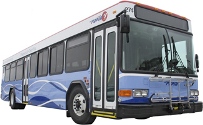Clare Jellick has been doing some digging. She found out that District 150 and the Peoria Housing Authority (PHA) are represented by the same law firm (Kavanaugh, Scully, Sudow, White & Frederick) — and by lawyers whose offices are apparently right next to each other. The two bodies are negotiating a land deal so that District 150 can build a new, suburban-style grade school on the site of the existing Harrison Primary School plus land it wants to purchase from the PHA.
While the best course of action would be to retain separate counsel, the district is, of course, going to instead sign a conflict-of-interest waiver. That makes everything legal and ethical, but it doesn’t remove all risk. It appears that such conflict waivers are generally discouraged, and for good reason. According to one resource I found on the web, it may mean that the District won’t be able to get as good of a deal on the land as they could if they had separate law firms. Here’s a portion of a sample conflict-of-interest waiver (emphasis mine):
It may not be possible for a single law firm to represent both parties to the Transaction in the same aggressive manner as would two separate and independent law firms. By giving the consent requested in this letter, you are, in effect, waiving that kind of zealous representation of your individual and conflicting interests with respect to the Transaction. It is possible that each or both of you might be advised by independent counsel to demand or offer different or more favorable terms and conditions with respect to the Transaction than we can or will demand or offer.
Here’s why it makes such a big difference: According to the Journal Star, the 22-acre parcel of land the district wants to buy from PHA is appraised at $178,000. The PHA, however, is asking $800,000 for the land because they want to recoup the cost of demolishing the slums that sat there until just recently. That’s a huge difference. Remember, this is the school district that supposedly can’t afford $40,000 to keep their truancy center open or $63,000 to pay for their own marketing director (she’s paid by Caterpillar). This is also the school district that paid way over market value for eight homes on Prospect road that they can’t use, wasting $877,000 in taxpayer money.
The district doesn’t really even need this extra land (a total of 25+ acres for a K-5 school?), but if they’re going to buy it anyway, the least (and I do mean the least) they can do is try to get the best possible price for it. True to form, the school district is poised to waste more money by not getting separate representation.

 On Tuesday night, the city is probably going to approve a
On Tuesday night, the city is probably going to approve a